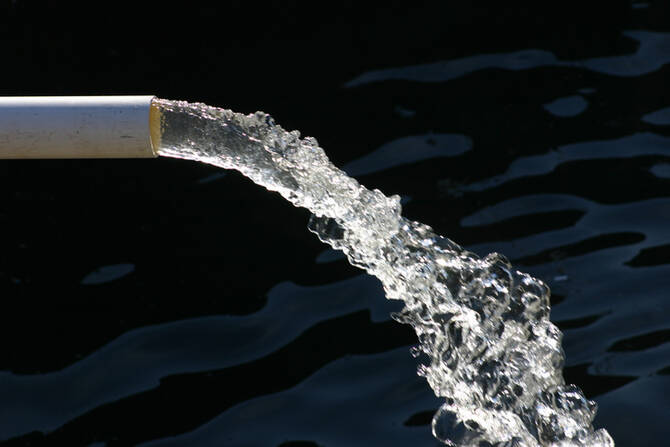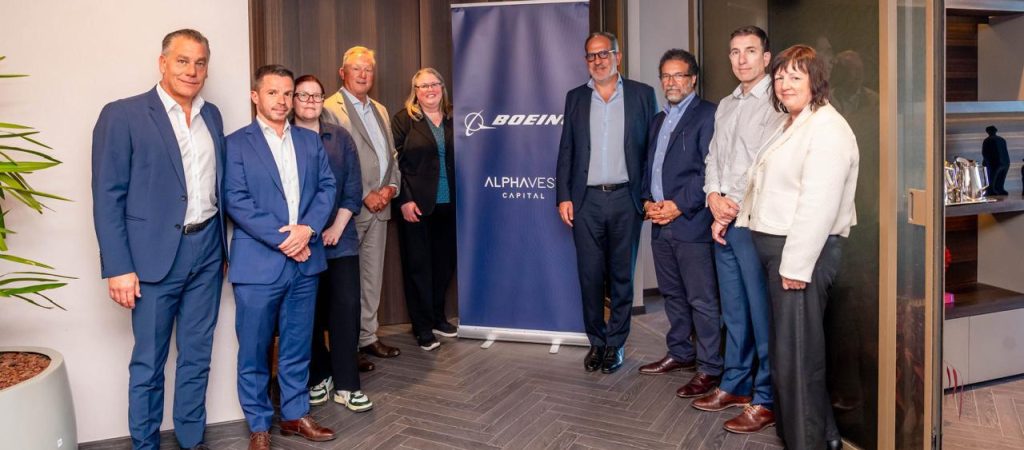TASHKENT: As the Middle East embraces transformation under the banner of sustainability and economic diversification, water security stands as one of the most critical obstacles and opportunities of our time.
At the helm of addressing this challenge in Saudi Arabia is Alkhorayef Water & Power Technologies, also known as AWPT. This company has not only solidified its market leadership but is now actively expanding its international footprint.
In an exclusive interview with Arab News, Rami Moussilli — CEO of AWPT since 2014 — shared key insights into the company’s strong performance in 2024, its alignment with Vision 2030, and its ambitions beyond Saudi Arabia.
Speaking at the Tashkent International Investment Forum, Moussilli told Arab News that AWPT is supporting Uzbekistan’s Sustainable Development Vision.
Uzbekistan is a key international focus for AWPT as the country undergoes significant transformation through infrastructure modernization and sustainable development.

Rami Moussilli, CEO of AWPT. Supplied
Moussilli noted that AWPT has held high-level discussions with multiple ministries, which culminated in a meeting with the president of Uzbekistan.
“There is strong alignment between our core strengths and Uzbekistan’s national development priorities,” said Moussilli.
As Uzbekistan ramps up investment in urban expansion and essential services, AWPT is offering support across the entire water infrastructure lifecycle— from system rehabilitation and advanced wastewater treatment to non-revenue water reduction and energy-efficient technologies.
AWPT’s approach in Uzbekistan is built on three foundational pillars: strengthening public-private partnership frameworks, delivering engineering excellence, and promoting environmental and economic sustainability
With a focus on knowledge transfer and local capacity building, AWPT is not just exporting services; it is building lasting partnerships.
Speaking at the opening of the investment forum, Uzbekistan’s President Shavkat Mirziyoyev pledged his country’s commitment to developing green energy to ensure stable energy resources for the economy.
“Over the past short period, nearly $6 billion worth of foreign direct investment has been attracted to this sector. Electricity production has increased from 59 billion to 82 billion kilowatt-hours,” he said. “In the next five years, this figure will exceed 120 billion kilowatt-hours, and the share of green energy in the energy mix will reach 54 percent.”
He added that efforts are underway to draw $4 billion to upgrade the power grids, and by next year around 9 grids will be transferred to private partnership.
“In addition, we have launched the sale of green certificates and carbon units for the first time. This year, we will join global carbon markets and create a “Green Uzbekistan” climate investment platform,” Mirziyoyev said.
A model for the future of water
AWPT sets itself apart from others in the sector with its integrated delivery model.
By operating across all stages of the water asset lifecycle — from design and construction to operation and rehabilitation — AWPT achieves efficiencies that traditional players often miss.
This holistic approach allows the company to offer clients and investors a unique value proposition: resilient profitability and proven risk management.
AWPT closed 2024 with what Moussilli described as “a year of exceptional performance and strategic progress.”
The financial numbers support this assertion. Net income surged by an impressive 64 percent over the previous year, while revenues rose by 16 percent, underscoring both strong demand and operational excellence.
Profit margins also improved significantly, growing from 8.2 percent to 12 percent, and earnings per share followed suit with over 64 percent growth.
The company’s shareholder equity expanded by 44 percent, further bolstered by a return on equity of 38 percent and a return on assets of 35 percent, clear indicators of efficient capital and resource management. Notably, AWPT ended the year with a 300 percent increase in free cash flow, a critical marker of financial health in a capital-intensive sector.
Powering Vision 2030 through water privatization
At the heart of AWPT’s strategy lies a firm alignment with the Saudi National Water Strategy 2030, which outlines the privatization of key infrastructure sectors, including water treatment, wastewater management, and the reuse of treated effluents.
Moussilli emphasizes the instrumental role water infrastructure plays in national development, saying: “Water is no longer just a utility — it is a strategic pillar for economic resilience and public health.”
AWPT’s integrated services span the entire water and wastewater value chain — from engineering, procurement, and construction to operation and maintenance, public-private partnerships, and city management contracts.
This depth of capability positions the company to benefit from the estimated $200 billion in upcoming water infrastructure investments under Vision 2030.
Sustainability at the core
With increasing global attention to environmental conservation, AWPT has integrated sustainability into its operational DNA. Serving over 26 million people across the Kingdom, the company advocates resource optimization, water quality, and long-term resilience.
“Our sustainable water practices are rooted in prevention, remediation, and efficiency,” said Moussilli. This includes proactive leak detection and repair of water lines, maintenance of sewage lines to prevent environmental contamination, and advanced treatment of sludge to enable its reuse in agriculture or other sectors.
“Every drop we save is a step toward decarbonizing our sector,” he added, noting that AWPT’s treatment of wastewater not only protects the environment but also allows for the reuse of treated effluent for irrigation, reducing reliance on freshwater sources.
Strategic objectives: local strength, global reach
With its commanding position in the Saudi market, AWPT is setting its sights on international expansion.
Moussilli outlined a three-pillar strategy for the future, including a focus on sustaining market leadership in Saudi Arabia by capturing new value pools across water and wastewater infrastructure.
Expanding into global markets and leveraging AWPT’s superior operating capabilities and integrated model as competitive advantages is another part of the vision, with diversifying into new environmental services and creating synergies around its water-centric core competencies the final pillar.
This strategy is underpinned by AWPT’s unique ability to grow both top-line and bottom-line performance simultaneously while preserving a strong balance sheet, enabling resilience even amid inflation and rising interest rates.






























